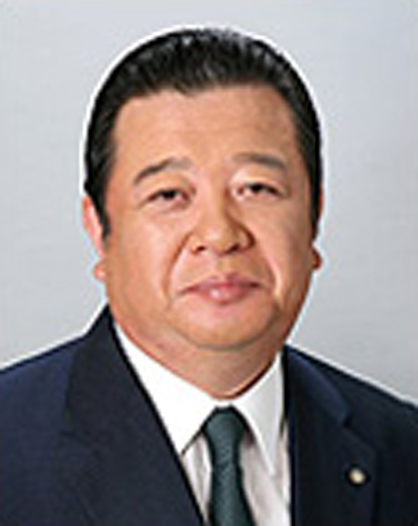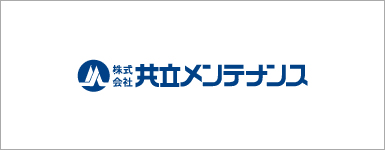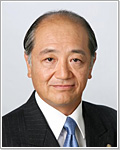| Kyoritsu Maintenance Co., Ltd. (9616) |
|
||||||||||||||
Company |
Kyoritsu Maintenance Co., Ltd. |
||
Code No. |
9616 |
||
Exchange |
TSE 1st Section |
||
Chairman |
Haruhisa Ishizuka |
||
President |
Mitsutaka Sato |
||
HQ Address |
2-18-8 Soto Kanda, Chiyoda-ku, Tokyo |
||
Year-end |
March |
||
URL |
|||
*Share price as of closing on June 10, 2016. Number of shares outstanding as of most recent quarter end excluding treasury shares. ROE, BPS based on previous term's results.
|
||||||||||||||||||||||||
|
|
* Estimates are those of the Company. A 1.2 for 1 stock split was conducted on April 1, 2015.
This Bridge Report provides information about Kyoritsu Maintenance Co., Ltd. including a review of its fiscal year March 2016 earnings.
|
|
| Key Points |
 |
| Company Overview |
|
The composition of consolidated fiscal year March 2016 sales by business segment are provided below.  <Corporate History>
Kyoritsu Maintenance was established in September 1979. The founder, Haruhisa Ishizuka, has long been associated with the food service industry and started the Company by taking on the operations of corporate cafeteria facilities on a consigned basis. In the following year of 1980 in Sakura City, Chiba Prefecture, the Company established a two story wooden structure with 28 small four Japanese straw mat rooms as its first dormitory facility. Based on the principle of providing "food" that "fosters the health and well being of students to put their parents' minds at ease," Kyoritsu was able to steadily expand its student dormitory business through partnerships with various schools. The Company steadily expanded its operating territory to cover the Tokyo, Kanagawa, Nagoya and Osaka regions. In April 1985, Kyoritsu began offering corporate dormitories to employees that offered highly unique features of "individual rooms with commissary functions providing breakfast and dinner," and "large bathing facilities" as comforting amenities for residents. In May 1987, the Company expanded the business field to food business by utilizing its boarding know-how developed through outsourced business in student dormitory, corporate dormitory, cafeteria and so on. In June 1993, Kyoritsu moved its headquarters to its current location and in July of the same year it entered the resort hotel business with the opening of a facility in Nagano Prefecture, followed by their entry to the business hotel realm in August with the opening of a facility in Saitama Prefecture. In September 1994, the Company listed its shares on the JASDAQ Market (At the time called the OTC Market), in March 1999 it moved its listing to the Second Section of the Tokyo Stock Exchange, and then to the First Section in September 2001.
|
| New Medium Term Business Plan "Kyoritsu Full Accelerator Plan" : 3 Years From Fiscal Year March 2016 to 2018 |
|
Business Environment
"Japan Revitalization Strategy" 2014 Revised
Future Events
 1. Concentrated and aggressive development investments will be made with the goal of satisfying customer needs
2. Strengthen profitability by achieving an appropriate balance between value and pricing
  |
| Fiscal Year March 2016 Earnings Results |
 Sales, Ordinary Income Rose by 22.5%, 27.6% Year-On-Year
Sales rose by 22.5% year-on-year to ¥135.053 billion on the back of favorable trends within the dormitory business with occupancy rates rising 0.1% point to 97.3% at the start of the fiscal year. The hotel business also benefitted from strong demand from inbound customers (Visitors from overseas) and Japanese travelling domestically for both Dormy Inn business and resort hotels, and subsequent strong occupancy rates. In other businesses, both the construction and PKP divisions contributed to the strong sales growth and they both turned profitable. And while gross income margin declined by 0.6% points year-on-year, sales, general and administrative expense margin also declined and allowed operating income margin to rise by 0.1% point year-on-year. As a result of these developments, operating, ordinary and parent net incomes rose by 24.7%, 27.6%, and 36.1% year-on-year to ¥10.244, ¥9.775 and ¥5.970 billion respectively. This marked a repeat of the large year-on-year gains in sales and profits recorded during the previous term, and the sixth consecutive term of increases and the fourth consecutive term of record high ordinary income. As a result of this strong performance, dividends are expected to be raised by ¥2 per share to ¥52. Moreover, the actual dividend rose by 24.8% year-on-year after the 1.2 for 1 stock split conducted on April 1, 2015 is considered.
 Dormitory Business
Sales and operating income rose by 4.1% and 3.2% year-on-year to ¥44.395 and ¥6.574 billion respectively. Occupancy rates rose by 0.1% point year-on-year to 97.3% at the start of the term. The number of dormitory facilities rose by 19 (Excluding consigned facilities) from the previous term to 455, and the number of contracted residents also rose by 1,797 from the end of the previous term to 36,176 residents as of the end of the current term.Sales of student dormitories continued to benefit from increases in secondary education advancement rates and strong demand from inbound students from overseas. Collaborative agreements with 10 new colleges and educational institutions including Tohoku Gakuin University were formed. Furthermore, a new high value added service called the "resident assistant" system (*1) was introduced to dormitories. Strong demand from students from overseas allowed their share of dormitories to rise by 0.5% points year-on-year to 10.9% of the total contracted student residents numbers, which rose by 833 to 20,574. Consequently, sales rose by 1.7% year-on-year to ¥25.382 billion. * 1: Resident assistant system The resident assistant system is designed to promote comfortable and secure lifestyles at dormitories for students living away from home for the first time and entails various daily lifestyle support services provided by student leaders. The resident assistant system provides consultation services and helps to promote exchange among residents through various events and activities conducted within the dormitories and facilitate the communication not only among residents but also between resident leader or dormitory superintendent and residents. Efforts are also made to maintain a free and enjoyable environment for students, while at the same time maintaining a minimum level of rules. Furthermore, activities will also be conducted to promote exchange between dormitory residents that exceed the boundaries of schools and contribute to growth in the communicative skills of dormitory residents. An increase in the hiring of newly graduating students is acting as a tailwind to the corporate dormitory business. Moreover, companies are newly introducing corporate dormitories for their employees and the number of whole dormitory facilities which have been contracted by single companies is on the rise. Consequently, the number of contracted residents rose by 885 to 9,998 and sales rose by 7.9% year-on-year to ¥11.294 billion. Domeal studio type condominium dormitories saw robust demand on the back of resident introductions from collaborating educational institutions and corporations, and due to a shift from dormitories with commissary services to facilities without food services. Therefore, the number of contracted residents rose by 282 year-on-year to 4,917 and sales rose by 7.1% year-on-year to ¥4.165 billion. Consigned facility service is the function where the management of dormitories owned by educational institutions and corporations is outsourced to Kyoritsu Maintenance. Kyoritsu was able to grow sales by 6.2% year-on-year to ¥3.552 billion by leveraging its differentiation strategy that is based on its position as the "Japanese boarding house with the best operations."  Hotel Business
Sales and operating income rose by 13.9% and 26.8% year-on-year to ¥53.430 and ¥6.006 billion respectively. The favorable reputation of facilities led to increases in repeat usage by domestic travelers, and increases in demand from overseas visitors despite the strengthening of the yen acted as a tailwind for the hotel business. Both the Dormy Inn and resort hotel divisions saw strong occupancy rate trends and increases in room prices. In particular, the contribution of the Dormy Inn division helped to boost profits by a large margin.
Dormy Inn (Business Hotel) Division
During fiscal year March 2016, four new facilities including "Natural Hot Springs Kinko no Yu Dormy Inn PREMIUM Nagoya Sakae", "Natural Hot Springs Kachi no Yu Dormy Inn Ueno Okachimachi", "Natural Hot Springs Kousho no Yu Dormy Inn Higashimuroran", and "Natural Hot Springs Sakaiminato Yunagi no Yu Onyado Nono" were opened. Amongst these, "Natural Hot Springs Sakaiminato Yunagi no Yu Onyado Nono" was designed as a premium facility of the Dormy Inn brand of hotels to accommodate a wide range of customer. Demand at existing facilities also trended favorably. High occupancy rates recorded at Jingumae in Shibuya Ward, Hacchobori, Akihabara, Kyoto Station Front, PREMIUM Namba, Hakata Gion and other facilities allowed overall occupancy rates to rise by 0.4% points to 88.5%. At the same time, room pricing also rose by ¥1,300 to ¥10,000. And while occupancy rates were strong, they are running at close to full capacity and this has contributed to a rise in room pricing.
  Resort Hotel Division
The three new facilities of "Kamui no Yu La Vista Akangawa", "La Vista Fuji Kawaguchiko", and "Hakone-Yumoto Hot Springs Tsuki no Yado Sara" were opened during fiscal year March 2016. With regards to the Hakone region facilities, the lowering in November of the volcanic activity warning alert for Mt. Hakone, which had been raised in May 2015, has contributed to a gradual recovery in occupancy rates. Occupancy rates rose by 0.7% point year-on-year to 84.4% and room pricing rose by ¥800 to ¥39,900.
 Other Businesses
Sales rose by 30.7% year-on-year to ¥48.747 billion and an operating income of ¥970 million was recorded, which compares with a loss of ¥95 million incurred in the previous fiscal year. Sales and operating income of the contracted services division rose by 17.7% and 35.0% year-on-year to ¥14.859 and ¥0.508 billion respectively. These increases are attributed to acquisition of new rental income properties during the previous term and an increase in the number of building management related projects. In the food service division, sales rose by 8.6% year-on-year to ¥5.787 billion, but the operating loss expanded from ¥1 million in the previous term to ¥4 million in the current term. New facility openings contributed to the rise in sales, but increased opening expenses caused the loss to expand. Sales and operating income of the construction division rose by 72.5% and 144.0% year-on-year to ¥16.313 and ¥0.677 billion respectively. Development costs continued to trend at high levels, but increases in orders for hotel development and concentrated sales of condominiums allowed both sales and profits to grow. In other business, sales rose by 32.9% year-on-year to ¥11.786 billion and the operating loss contracted from ¥748 million in the previous term to ¥0.212 billion in the current term. Expansion in the PKP services due to acquisition of new projects and improvements in efficiency contributed to the higher sales and large contraction in losses.
  |
| Fiscal Year March 2017 Earnings Estimates |
 Estimates Call for Sales, Ordinary Income to Rise 2.2%, 12.5%
Kyoritsu Maintenance's estimates call for sales and ordinary income to rise by 2.2% and 12.5% year-on-year to ¥138.0 and ¥11.0 billion respectively. The dormitory business is expected to see sales and operating income grow by 2.0% and 3.5% year-on-year to ¥45.3 and ¥6.807 billion respectively. Strong demand was seen at the start of the term with occupancy rates rising by 1.0% point to 98.3% in April. Increase in capacity due to addition of new facilities and high occupancy rates are expected to contribute to increases in both sales and profits. Kyoritsu will respond flexibly to the diversifying needs of residents and guests while maintaining appropriate cost management to ensure stable earnings generation capability.In the hotel business, estimates call for sales and operating income to rise by 16.2% and 22.3% year-on-year to ¥62.077 and ¥7.348 billion respectively. New Dormy Inn facility openings are expected in the coming term including "Natural Hot Springs Tento no Yu Dormy Inn Abashiri" and "Natural Hot Springs Toyama Tsurugi no Yu Onyado Nono" in June, "Global Cabin Gotanda" in July, and "Dormy Inn Nagano" in August. In addition, "Dormy Inn PREMIUM Tokyo Kodenmacho", "Onyado Nono Namba" (Provisional name) and the second facility in overseas markets of "Dormy Inn SEOUL Gangnam" (Provisional name) for a total of seven facilities expected to be opened in the coming fiscal year. In the resort hotel business, a new facility called "Naruko Kissho" (Provisional name) is expected to be opened. The estimate for higher sales is based upon the contribution from these newly opened facilities, and estimate of higher profits is based upon the large profit contribution from resort hotels. Profits of the hotel business are expected to grow by ¥1.342 billion, of which ¥1.030 billion is expected to be derived from the resort hotel division. In addition to expenses arising from the new facilities within the Dormy Inn division expected to be newly opened, expenses arising from renewal of existing facilities in Sapporo, Hatchobori, and Toyama are also anticipated. In addition to these anticipatory investments, some expenses to increase occupancy rates are also expected to be incurred. Moreover, the negative influence of the earthquakes that have plagued the Kumamoto region in southern Japan have also been factored into estimates. At the same time, increases in room pricing at resort hotel facilities, which failed to rise in the previous term, are anticipated in the coming term, along with full year contributions from hotels opened in the previous term and a recovery in earnings derived from hotels in the Hakone region.  |
| Conclusions |
|
The estimates of 2.0% growth in sales during fiscal year March 2017 appear conservative given the large increases in both capacity and occupancy rates at the start of the term in the dormitory business. With regards to the hotel business, the driver of profit growth is expected to shift to resort hotels from Dormy Inn business hotels due to large anticipatory investments anticipated for Dormy Inn facilities. Moreover, the strong increases in occupancy rates of 2.2% and 0.7% points to 86.7% and 82.4% in Dormy Inn and resort hotels respectively in April also make Kyoritsu's estimates for the hotel business to appear conservative. Therefore it now appears that the Company will achieve its ordinary income targets defined in its Medium Term Business Plan ahead of schedule, and the market is likely to focus upon the potential for positive earnings surprises. |
| <Reference: Corporate Governance> |
|
◎Organizational Composition and Operation
Form of Organization)
Board Director Auditor Company with Board of Company Auditors
18 board directors with none external 3 auditors including 2 external ◎Corporate Governance Report
Kyoritsu Maintenance has submitted a Corporate Governance Report on December 2, 2015 after the Corporate Governance Code came into effect (in June 2015).<Fundamental Thinking> Kyoritsu Maintenance bases its management policy upon the concept of "contributing to a broad based development of society through the provision of healthy food and comfortable living services in various stages of people's lives." Furthermore, towards its on-going advancement and the maximization of shareholders' long-term benefit, Kyoritsu Maintenance considers the enhancement of corporate governance essential, and therefore it is implementing the acceleration of decision-making process, strengthening of business supervision, focusing on thorough accountability, and prompt and appropriate information disclosure. Kyoritsu recognizes that ensuring transparency and soundness is a key management issue. Furthermore, the Company has established general meeting of shareholders, managing directors, the board of directors, the audit and supervisory committee, and an accounting auditor, as organizations under the Companies Act. Apart from these organizations, the Company has also established a management strategy meeting, a compliance committee, and a group management information exchange meeting. <On implementation of the principles of Corporate Governance> Kyoritsu Maintenance implements each and every principle of the Corporate Governance Code.  <Disclaimer>
This report is intended solely for information purposes, and is not intended as a solicitation to invest in the shares of this company. The information and opinions contained within this report are based on data made publicly available by the Company, and comes from sources that we judge to be reliable. However we cannot guarantee the accuracy or completeness of the data. This report is not a guarantee of the accuracy, completeness or validity of said information and or opinions, nor do we bear any responsibility for the same. All rights pertaining to this report belong to Investment Bridge Co., Ltd., which may change the contents thereof at any time without prior notice. All investment decisions are the responsibility of the individual and should be made only after proper consideration.Copyright(C) 2016 All Rights Reserved by Investment Bridge Co., Ltd. |




